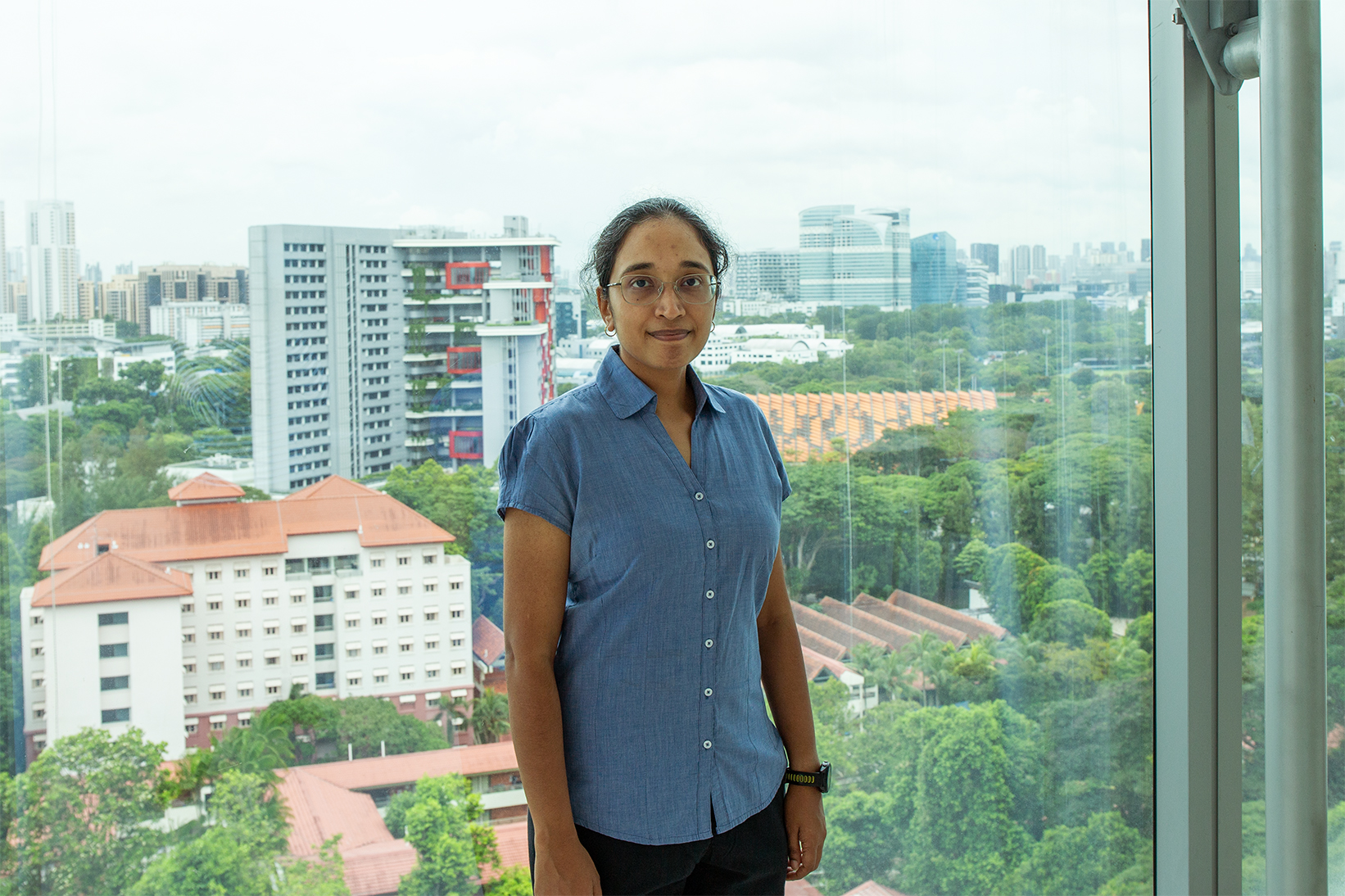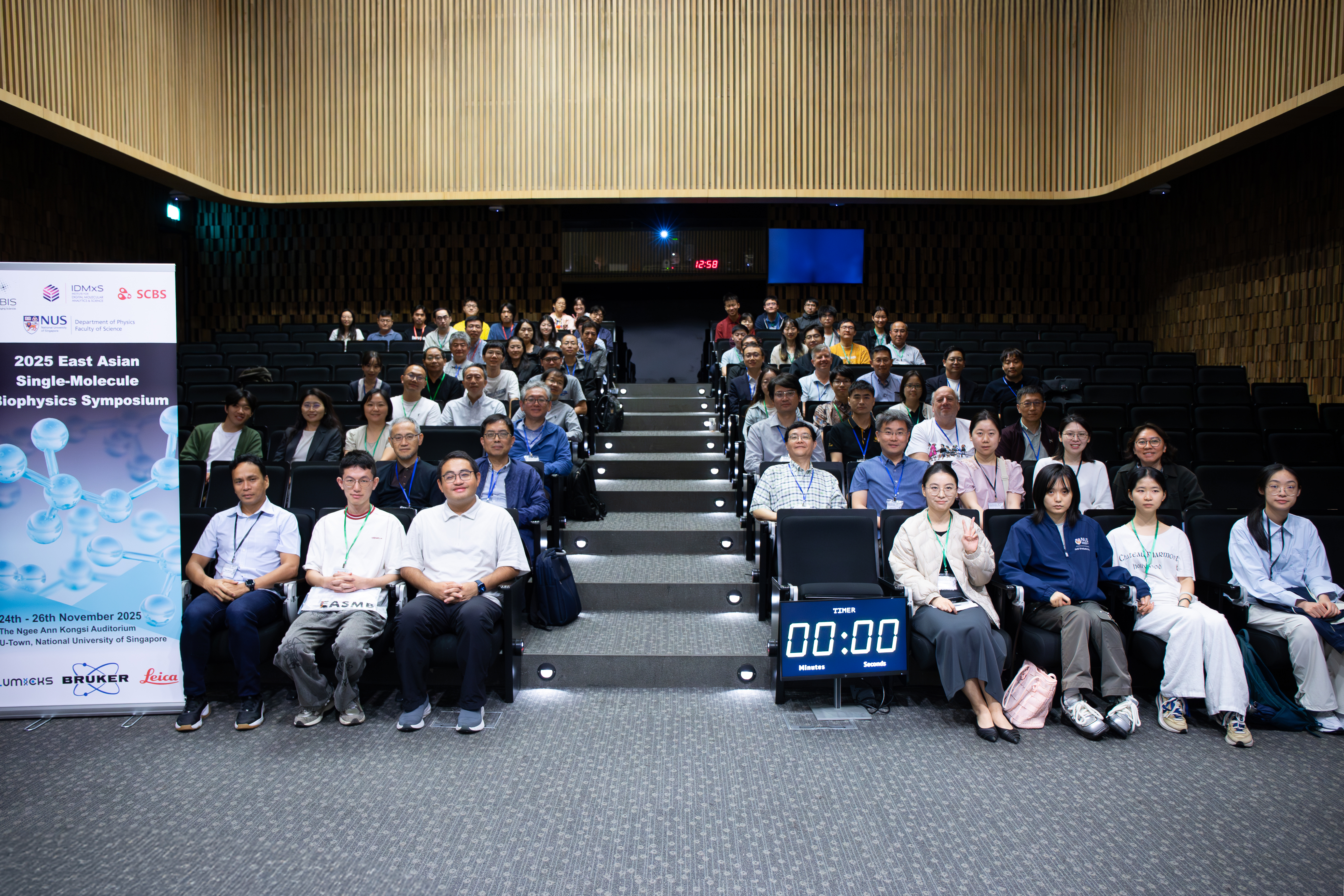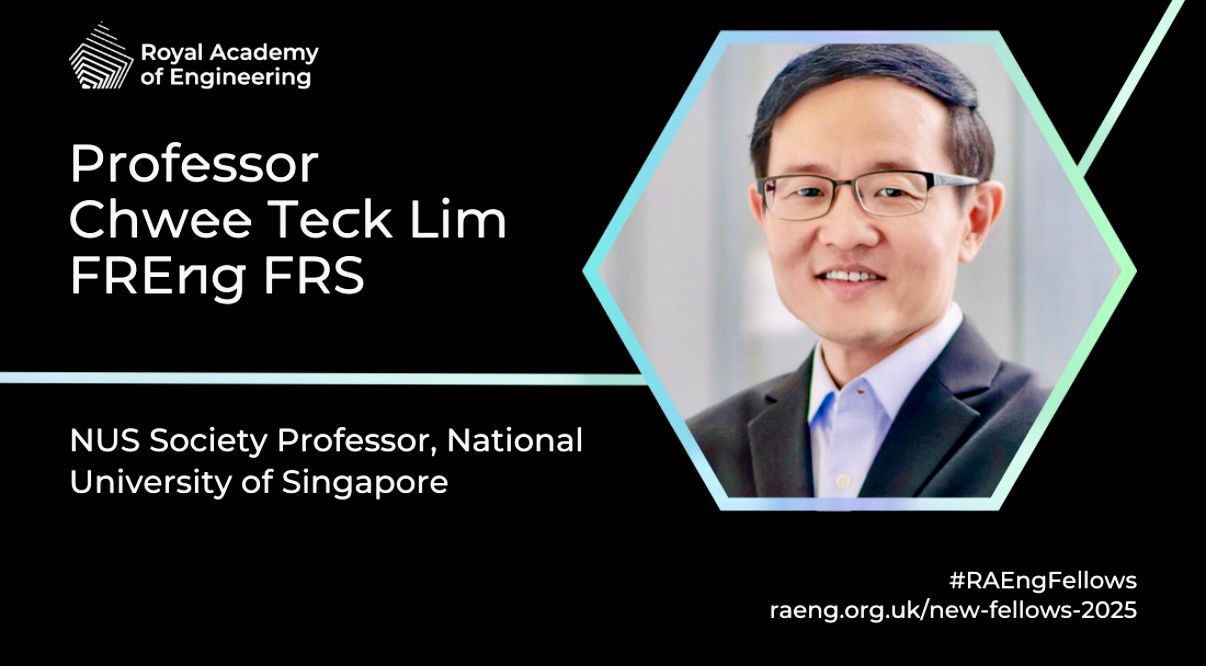The MBI-BPS Thematic Meeting on the Mechanobiology of Disease
Lakshmi Ramachandran | September 2016
26-30 September, 2016. The MBI-BPS 2016 Thematic Meeting on the ‘Mechanobiology of Diseases’ brought together scientists from around the world to present and discuss research on the physical basis of various diseases. The conference, which highlighted exciting novel avenues for mechanics-based diagnostics and drug development, took place at the University Cultural Centre at the National University of Singapore (NUS), and was jointly hosted by the Mechanobiology Institute (MBI), Singapore and the Biophysical Society, USA.
The meeting commenced with an opening address from the MBI Director Prof. Michael Sheetz. He presented research from his lab that showed how receptor tyrosine kinases (RTKs), known to function in signal transduction pathways that regulate cell growth, additionally function as mechanosensing enzymes. Aberrations in RTK signaling are often associated with cancer, and RTKs as well as components of signal transduction pathways they regulate, have been investigated as anti-cancer drug targets. This work opens up possibilities for novel anti-cancer strategies by targeting RTKs via the mechanosensory pathways regulated by them.
The mechanobiology of cancer, mainly the mechanical basis of cancer cell invasion and migration, emerged as the most discussed topic in the meeting.
Elegant studies using geometrically confined environments that closely mimic the in vivo microenvironment of cancer cells shed light on mechanosensing by invasive cancer cells (Dr. Andrew Holle), epithelial-mesenchymal transition (Dr. Amit Pathak), and collective cell migration in benign vs malignant cancer nature of migration (Dr. Chwee Teck Lim). Dr. Xavier Trepat showed that a cancer activated fibroblast can mechanically pull on cancer cells through heterotypic adhesions, thus instigating metastatic invasions. Aastha Kapoor spoke about Rho-ROCK-Myosin contractility as a common mechanism underlying both the amoeboid and mesenchymal mode of migration in Paclitaxel and Cisplatin resistant ovarian cancer cells. Dr. Amy Rowat presented a novel platform called parallel microfiltration to screen for cancer cells based on their mechanotype.
Mechanics-based diagnostics and cutting-edge solutions to fight aging was also a topic of significant interest among attendees.
Mechanics-based diagnostics and cutting-edge solutions to fight aging was also a topic of significant interest among attendees in the meeting. Dr. Krystyn Van Vliet demonstrated their innovative microfluidics device that can separate mesenchymal stem cells reliably, based on cell diameter, stiffness, and nuclear fluctuations, which could have applications for stem cell based therapeutics. From L’Oreal, Dr. Elisa Caberlotto presented a novel study on the positive effects of controlled mechanical stimulation (using a soft massaging device based on an oscillating torque) on human skin. Intriguingly, massaged human skin produced more dermal proteins which may delay aging. In a related topic, Dr. Kevin Chalut demonstrated the correlation between matrix stiffness and aging, that is, the softer the matrix, the younger the cells, and vice versa. He also discussed how reversal of aging was observed in oligodendrocyte progenitor cells by using soft substrates with high laminin density.
The recent interest in Zika virus was also represented at the meeting, with a talk from Dr. Shee Mei Lok describing the crystal structure of Zika virus and how this can be used to design effective therapies.
Dr. G.V. Shivashankar presented research from his lab that revealed effects of matrix constraints on non-random chromatin packing within cells, which could be critical in bringing together co-regulated genes on different chromosomes into gene clusters. He also proposed using nuclear mechanical features as a diagnostic marker. On a similar note, Cytovale, a spin-off company from Dr. Dino di Carlo’s lab, presented a cell deformability based microfluidics device to detect abnormal cells and its potential to be a rapid, label-free diagnostic technology. Based on the same principle of differential deformability of cell, Dr. Oliver Otto, presented a method to separate blood components in real-time without lysing cells or labeling components. Interestingly, Dr. Stuti Desai revealed the potential of a non-virulent strain of Salmonella that can form a biofilm around solid tumors to regress their growth.
The meeting also addressed the mechanobiology underlying cardiovascular diseases in a talk by Dr. Adam Engler, where he shared a novel disease model created in his lab, heart attack-in-a-dish, which mimics the fibrotic stiffening often observed in patients following a heart attack. Dr. Shyni Varghese presented the role of matrix proteins in balancing tissue stiffness and inflammation in fibrosis. Dr. Katharina Gaus discussed a new model for T-cell signaling via T-cell receptor clustering, and how this could affect antigen recognition by the immune system.

The conference, which highlighted exciting novel avenues for mechanics-based diagnostics and drug development, took place at the University Cultural Centre at the National University of Singapore (NUS).
There were also interesting talks on basic science research in mechanobiology, and how this could lead to future applications in understanding and treating disease. A number of attendees spoke about the mechanobiology of adhesion proteins and the cytoskeleton, which impacts many biological processes. Development was also a major topic of discussion, with presentations on the mechanobiology of tissue morphogenesis, as well as the mechanical impact of apoptosis during embryogenesis. The recent interest in Zika virus was also represented at the meeting, with a talk from Dr. Shee Mei Lok describing the crystal structure of Zika virus and how this can be used to design effective therapies.
Besides the talks, the brilliant poster sessions highlighted other fascinating research in the field. Best poster awards were presented to the winners on the final day of the meeting. Dr. Cristina Bertocchi won the first prize in the category of postdoctoral fellows for her poster on ‘Nanoscale Architecture of Cadherin-Mediated Adhesion’ and Dr. Matthias Koch came second for his poster titled ‘Force Transmission through the Microtubule Cytoskeleton’. In the category of graduate students, Thuan Saw (Distinct Modes of Apoptotic Cell Extrusion Governed by Epithelia Packing Density) and Zhihai Qui (Acoustic Mechanogenetics for Controlling Neuron Activity and Signaling) won the first and second prizes.
The excellent conference venue and a well-organized schedule provided ample time for networking and discussions between attendees. The conference banquet at the beautiful Singapore Yacht Club, with the setting sun in the backdrop, was a perfect location for attendees to reflect on the exciting research presented at the conference and discuss science late into the night.








